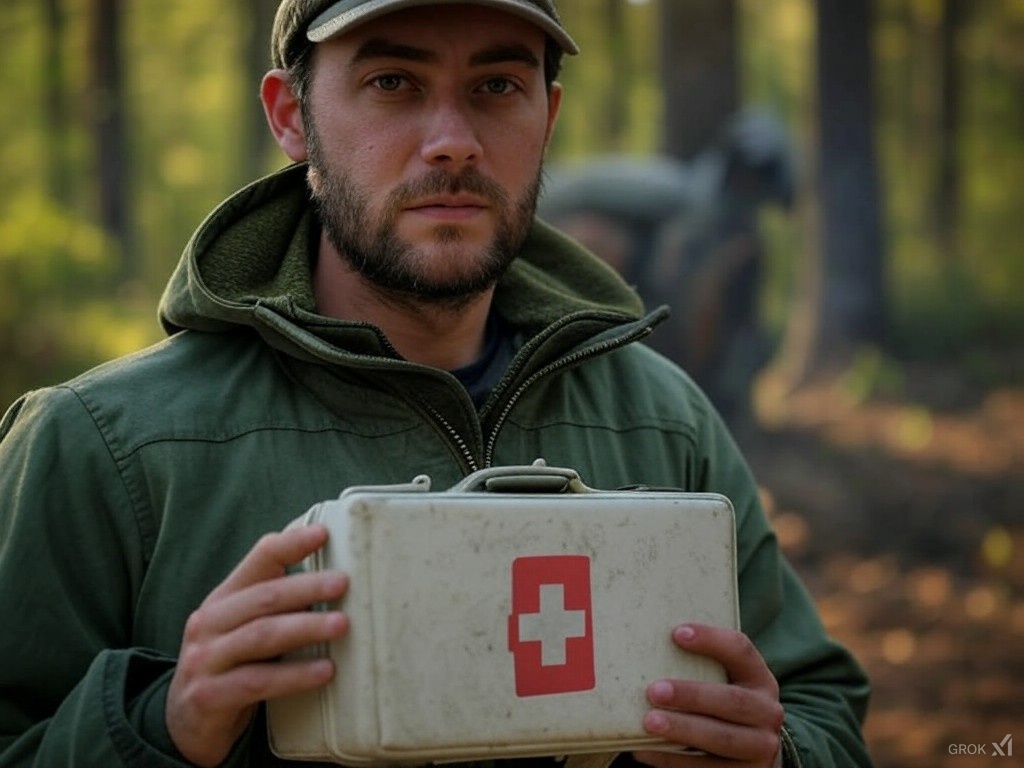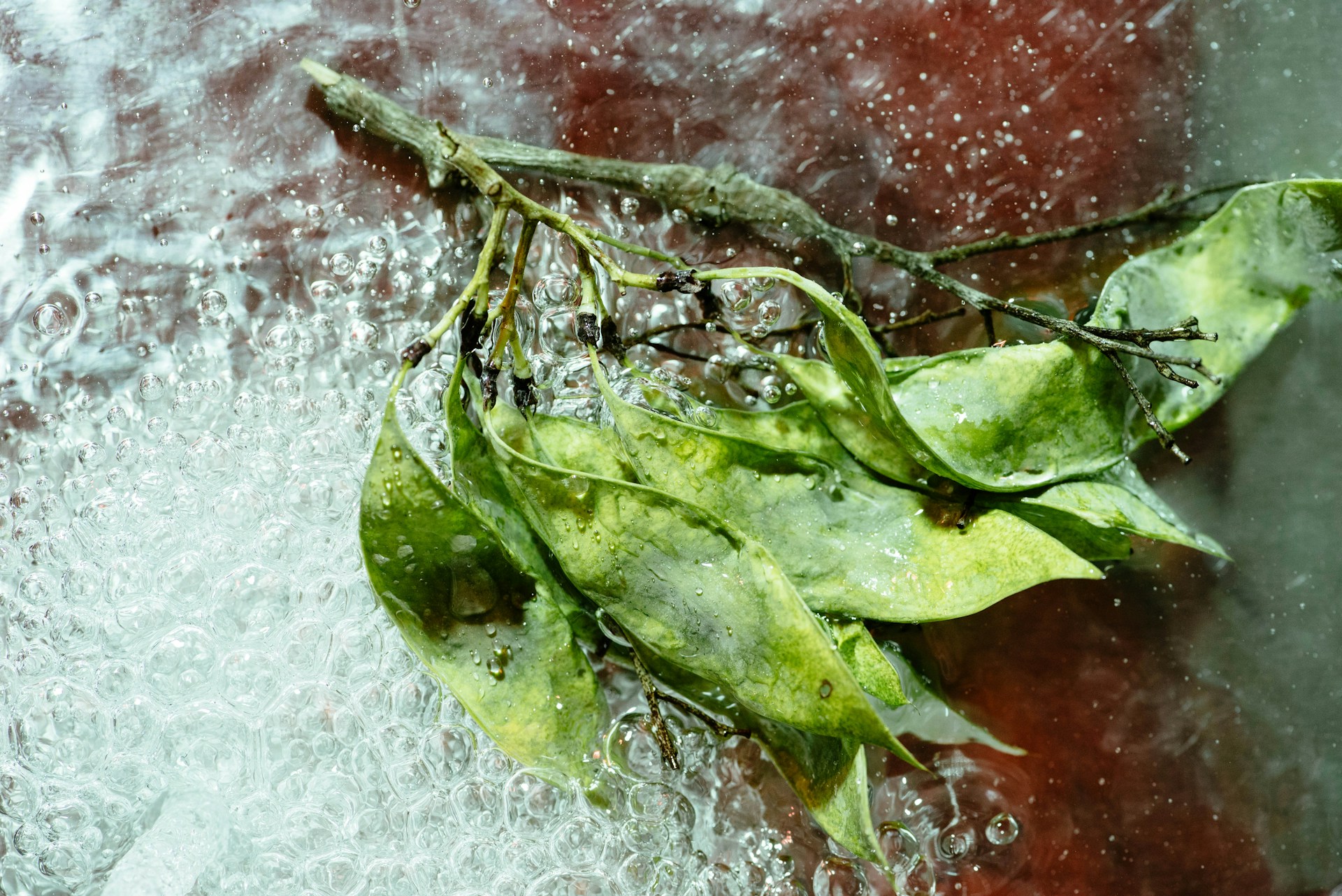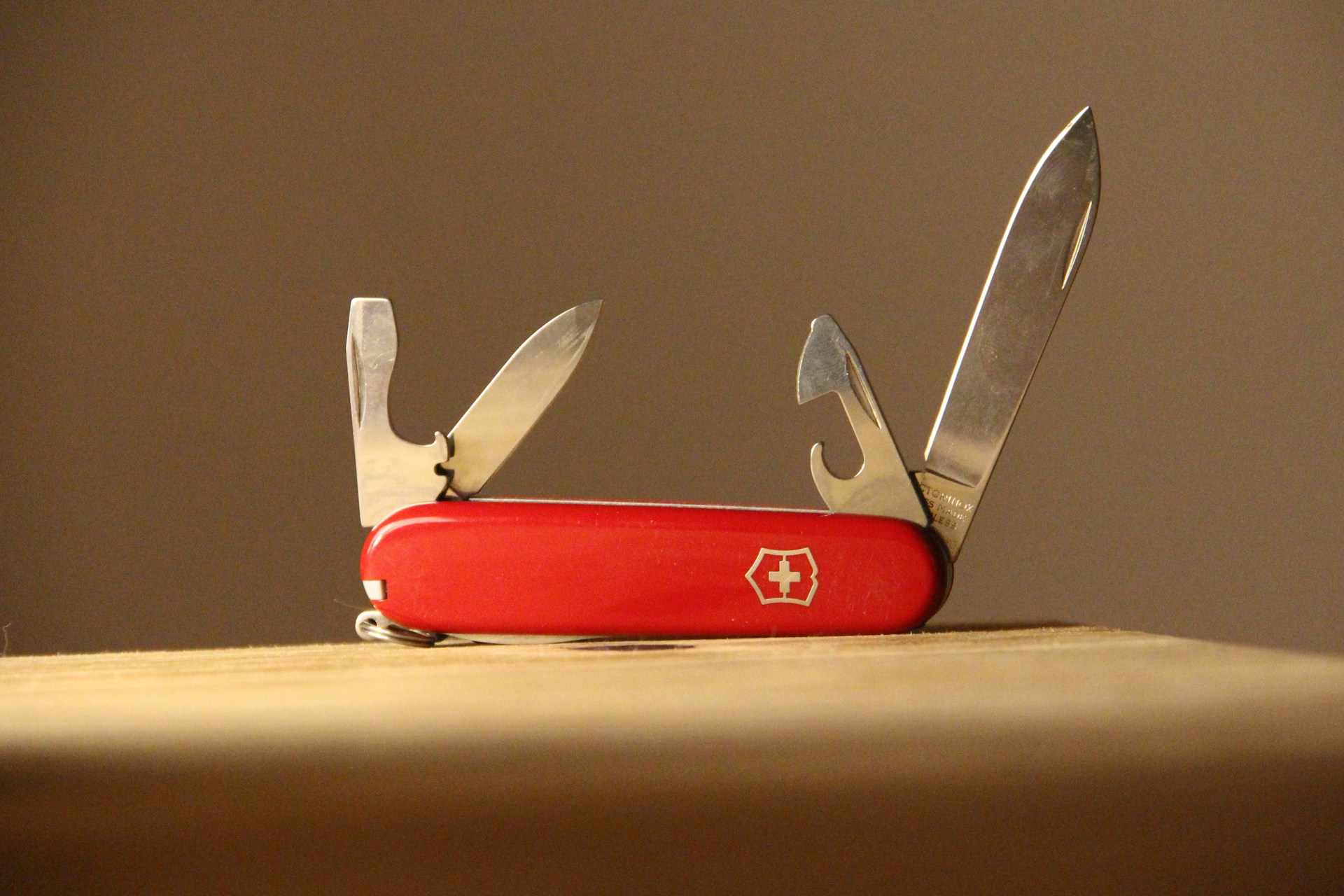Preparedness
9 Essential Medical Supplies Every Prepper Needs for Survival

When disaster strikes, having the right first aid supplies can mean the difference between life and death. Whether it’s a natural disaster, societal disruption, or a personal emergency, being prepared to handle medical issues without professional help is crucial. This guide will walk you through the essential medical items every prepper should have, along with the knowledge needed to use them effectively when professional care is unavailable.
1. Basic First Aid Kit Essentials
A well-stocked first aid kit is the cornerstone of any prepper’s medical supplies. Key items include gauze pads and rolls, bandages, antiseptic ointments, medical tape, and trauma shears. These tools are essential for controlling bleeding, preventing infection, and securing dressings. Customize your kit based on your family’s specific needs and the risks you are most likely to face.
2. Over-the-Counter Medications
Having a supply of over-the-counter medications can help manage minor illnesses and relieve symptoms when professional healthcare is limited. Make sure to rotate your stock to keep expiration dates current and store medications properly to maintain their effectiveness.
3. Advanced Wound Care Supplies
For more serious injuries, you’ll need advanced supplies like sutures, sterile gloves, and wound irrigation tools. These items are crucial for treating deep cuts and preventing infections when professional medical help is not available.
4. Diagnostic Tools
Equip yourself with diagnostic tools like thermometers, blood pressure cuffs, and stethoscopes. With proper training, these tools can help you assess and respond to medical emergencies effectively.
5. Survival Medicine Training
Supplies alone won’t suffice in an emergency. Taking a formal survival medicine course can provide invaluable hands-on education. Programs offered by organizations like the Red Cross teach skills such as patient assessment, bleeding control, fracture setting, and CPR. This training prepares you to potentially save lives when professional medical care is not available.
6. Authoritative Medical References
Stockpile medical references to help diagnose and address health problems. Books like “Where There Is No Doctor” and “The Survival Medicine Handbook” offer practical treatment advice and cover hundreds of medical issues. Keep printed guides and digital copies handy for quick reference during emergencies.
7. Regular Practice and Drills
Reading about emergency techniques isn’t enough; hands-on practice is essential. Regularly rehearse key skills like CPR, wound care, and fracture setting until they become second nature. This practice builds muscle memory and confidence, ensuring you can remain calm and focused during real emergencies.
8. Inventory and Storage Management
Keeping an up-to-date inventory of your medical supplies is crucial for preparedness. Designate a secure storage area, take inventory every six months, and replace expired items. Use waterproof storage bins to protect supplies from moisture and temperature fluctuations.
9. Smart Organization of Supplies
Organize your supplies for efficient response during emergencies. Group related items together, label kits clearly, and map out designated treatment areas in your home or bug-out location. Place basic first aid kits in go-bags, vehicles, and high-risk areas like kitchens and workshops.
Being prepared to handle medical emergencies without professional help requires thoughtful accumulation of supplies and extensive self-education. By building robust medical reserves and gaining essential skills, you can sustain health and potentially save lives when hospitals are inaccessible. Make first aid preparedness a priority in your disaster planning to mitigate reliance on professional healthcare during unstable times. Continue expanding your knowledge and supplies through online resources, community groups, and first responder courses. Incremental progress over time will enhance your capacity to confidently respond to medical crises.
Let us know what you think, please share your thoughts in the comments below.

Gear Reviews
The Hidden Advantage of Freeze-Dried Food When the Grid Fails

Power grid experts are warning that America’s electrical infrastructure is more vulnerable than ever, and most families who think they’re prepared for emergencies are about to learn a devastating lesson about their food storage plans.
While millions of Americans have stocked their freezers with meat, filled their refrigerators with fresh produce, and loaded their pantries with items requiring refrigeration, few have considered what happens when the power goes out for more than a few hours.
“The average American home loses power for 8 hours per year under normal conditions,” says David Martinez, a former utility grid engineer who now consults on emergency preparedness. “But we’re not living in normal conditions anymore. Grid vulnerabilities from cyberattacks, extreme weather events, and aging infrastructure mean extended outages are becoming the norm, not the exception.”
The numbers tell a sobering story. According to the U.S. Energy Information Administration, major power outages have increased by 67% since 2000. Climate scientists predict this trend will accelerate as extreme weather events become more frequent and severe.
Source: U.S. Energy Information Administration (EIA), ‘Electric Power Annual 2023’ – Data showing major power outages increased 67% from 2000-2023.
What most people fail to realize is that their carefully assembled emergency food supply could become worthless, or worse, dangerous, within hours of a grid failure.
The 4-Hour Window of Disaster
The USDA Food Safety and Inspection Service is clear about the timeline: refrigerated foods become unsafe after 4 hours without power if the refrigerator door remains closed. Frozen foods in a full freezer will stay frozen for approximately 48 hours, but only 24 hours if the freezer is half full.
Source: USDA Food Safety and Inspection Service, ‘Food Safety During a Power Outage’ – Guidelines on refrigerated food safety timelines during power failures.
Dr. Jennifer Walsh, a food safety microbiologist at the University of Wisconsin, explains the danger: “When power fails, bacteria multiply exponentially in the temperature danger zone between 40°F and 140°F. Salmonella, E. coli, and Listeria can double their population every 20 minutes under ideal conditions. By the time food smells bad, bacterial counts can be in the millions per gram.”
Source: Food Microbiology: Fundamentals and Frontiers, 5th Edition (ASM Press) – Bacterial growth rates in temperature danger zone.
For families who have invested hundreds or thousands of dollars in chest freezers full of meat, the financial loss is devastating. But the health risk is even worse.
“We see emergency room visits spike after extended power outages,” says Dr. Michael Chen, an emergency medicine physician in Houston who treated dozens of food poisoning cases after Hurricane Harvey knocked out power for weeks in 2017. “People try to salvage expensive meat from their freezers, thinking they can cook the bacteria away. But many foodborne pathogens produce heat-stable toxins that remain dangerous even after thorough cooking.”
Source: CDC, ‘Hurricane Harvey Health Effects’ – Documentation of foodborne illness increases following extended power outages in 2017.
The Canned Food Deception
Many preppers believe they’ve solved this problem by stockpiling canned goods. After all, canned food doesn’t require refrigeration or power to remain safe.
But nutritionists warn that relying on canned goods during extended emergencies creates its own set of serious problems.
“Canned foods are cooked at extremely high temperatures during the canning process, which destroys significant portions of heat-sensitive vitamins like vitamin C, thiamin, and folate,” explains Dr. Sarah Thompson, a registered dietitian specializing in emergency nutrition. “A family eating primarily canned foods for weeks or months will develop vitamin deficiencies that compromise immune function precisely when they need it most.”
Source: Journal of Food Science, ‘Nutrient Retention in Canned Foods’ (2019) – Study showing vitamin C losses of 50-80% and thiamin losses of 40-70% during thermal processing.
The sodium content in canned foods presents another critical issue. A single can of soup can contain 800-1,500mg of sodium, up to 65% of the daily recommended limit. During a grid-down scenario when medical care may be limited or unavailable, the cardiovascular stress from high-sodium diets becomes particularly dangerous.
Source: American Heart Association, ‘Sodium Content in Processed Foods’ – Analysis showing average canned soup contains 800-1,500mg sodium per serving.
“I’ve reviewed survival food plans where families would be consuming 4,000-6,000mg of sodium daily if they actually ate their stockpiled canned goods,” says Dr. Thompson. “That level of sodium intake increases blood pressure, causes fluid retention, and puts enormous stress on kidneys and heart. For anyone over 50 or with existing health conditions, it’s a recipe for disaster.”
The Freeze-Dried Solution
This is where freeze-dried food technology offers a crucial advantage that most people don’t understand.
Unlike frozen foods that require constant power, or canned foods that sacrifice nutrition for shelf stability, properly processed freeze-dried foods maintain their nutritional value for 25+ years without any refrigeration or power whatsoever.
The science behind freeze-drying explains why. The process removes 98-99% of moisture from food while keeping it frozen, preventing the formation of ice crystals that damage cell walls. Because the food never goes above freezing temperature during processing, heat-sensitive vitamins and nutrients remain intact.
Source: Food Technology Magazine, ‘Freeze Drying Technology and Applications’ (2021) – Technical overview of lyophilization process and nutrient retention.
Independent laboratory testing shows freeze-dried foods retain 90-97% of their original nutritional content, compared to 40-60% retention in canned foods and near-complete loss in frozen foods after power failure.
Source: International Journal of Food Sciences and Nutrition, ‘Comparative Analysis of Food Preservation Methods’ (2020) – Laboratory testing showing nutrient retention across preservation methods.
“The freeze-drying process is remarkable in its ability to preserve not just safety, but actual nutrition,” says food scientist Dr. Robert Hayes of Oregon State University’s Food Innovation Center. “We’ve tested freeze-dried fruits and vegetables stored for 20+ years and found vitamin content that rivals fresh produce in many cases.”
The storage advantages are equally impressive. Freeze-dried foods remain stable at room temperature, require no special storage conditions beyond keeping them dry, and maintain their quality in temperature ranges from below freezing to over 100°F.
Real-World Grid Failure Scenarios
The vulnerability of America’s power grid is not theoretical. Recent events have demonstrated exactly what happens when large populations lose power for extended periods.
During the February 2021 Texas power crisis, over 4.5 million homes and businesses lost power for days during freezing temperatures. Grocery stores were emptied within hours. Frozen food in home freezers spoiled. Families who had stockpiled food in freezers and refrigerators watched their investment rot.
Source: ERCOT (Electric Reliability Council of Texas), ‘2021 Winter Storm Uri Report’ – Official data on power outages affecting 4.5 million customers.
“I had $800 worth of meat in my chest freezer,” recalls Austin resident Tom Anderson. “After three days without power in sub-freezing weather, I had to throw every bit of it away. Meanwhile, my neighbor who had cases of freeze-dried meals just kept eating normally. I learned an expensive lesson.”
Hurricane Maria in 2017 left parts of Puerto Rico without power for 11 months. The average outage lasted 84 days. Frozen and refrigerated foods were worthless within the first week.
Source: Department of Energy, ‘Hurricane Maria Power Restoration Timeline’ – Documentation showing average 84-day outage duration with some areas lasting 11 months.
Even shorter outages create cascading problems. When Hurricane Sandy hit the Northeast in 2012, power outages lasting 7-10 days left families scrambling. Those with freeze-dried food reserves maintained normal nutrition while their neighbors fought over the last canned goods at damaged grocery stores.
Source: FEMA, ‘Hurricane Sandy After-Action Report’ – Analysis of power outage duration and food supply impacts. The Power Grid Threat Assessment
Energy security experts warn that grid vulnerabilities are increasing from multiple threat vectors.
The U.S. Department of Homeland Security has identified the electrical grid as one of the nation’s most critical and most vulnerable infrastructure systems. A 2020 report documented over 150 significant cyberattacks on energy infrastructure globally, with U.S. systems being prime targets.
Source: Department of Homeland Security, ‘Critical Infrastructure Security and Resilience Note’ (2020) – Report on cyber threats to energy infrastructure.
“Our grid was designed for 20th-century threats and loads,” explains former FERC commissioner Robert Powelson. “We’re now dealing with 21st-century cyberattacks, extreme weather events, and exponentially higher demand. The system is stressed in ways it was never designed to handle.”
Physical attacks pose additional risks. In 2013, a coordinated sniper attack on Pacific Gas & Electric’s Metcalf transmission station in California nearly caused a regional blackout. The FBI called it ‘the most significant incident of domestic terrorism involving the grid that has ever occurred.’
Source: Federal Energy Regulatory Commission, ‘Metcalf Substation Attack Report’ (2014) – FBI and FERC analysis of 2013 physical attack on power infrastructure.
Natural disasters present the most frequent threat. According to Climate Central, weather-related power outages have increased 78% since 2011. As climate patterns shift, these events are projected to become more severe and more frequent.
Source: Climate Central, ‘Surging Weather-Related Power Outages’ (2022) – Data analysis showing 78% increase in weather-related outages since 2011.
Beyond Food: The Cascade Effects
When the grid fails, the problems extend far beyond food spoilage.
Water treatment plants typically have 24-48 hours of backup generator fuel. After that, tap water becomes unsafe or stops flowing entirely. Gas stations can’t pump fuel without electricity. Cell towers have limited battery backup before going offline.
“A grid-down scenario becomes a total infrastructure failure within 3-5 days,” warns Martinez. “Food is just the first domino. Water, communications, transportation, and medical services all collapse in sequence.”
This makes the choice of emergency food even more critical. Foods that require extensive preparation, cooking time, or water consumption become problematic when resources are scarce.
Freeze-dried foods offer distinct advantages in these scenarios. Most require only cold or room-temperature water to rehydrate, consuming far less fuel for heating than cooking raw ingredients. The lightweight nature of freeze-dried food means families can evacuate with substantial food supplies if necessary.
The Cost-Benefit Analysis
Critics often point to the higher upfront cost of freeze-dried food compared to canned goods or buying in bulk to freeze. But this analysis ignores the total cost of ownership.
When a family invests $500 in a chest freezer and $1,000 in frozen meat, they’re betting that power will remain reliable. One extended outage can wipe out the entire investment.
Canned goods may cost less initially, but the nutritional deficits mean families may need to supplement with expensive vitamins and minerals. The shorter shelf life of canned goods (typically 2-5 years) means regular rotation and replacement costs that add up over time.
“When you calculate the actual cost per nutritious serving over a 25-year storage period, freeze-dried food is often cheaper than the alternatives,” explains emergency preparedness consultant Maria Rodriguez. “Add in the flexibility of not needing power, and the value proposition becomes obvious.”
The quality difference matters too. Modern freeze-dried meals have evolved far beyond the cardboard-tasting options of decades past. Companies like Freeze Dry Wholesalers are producing restaurant-quality freeze-dried meals that maintain flavor, texture, and nutritional value.
Building a Grid-Independent Food Strategy
Preparedness experts recommend a layered approach to emergency food storage, with freeze-dried foods forming the foundation precisely because they remain viable regardless of grid status.
“Start with a 30-day supply of freeze-dried meals as your baseline,” advises Rodriguez. “These give you guaranteed nutrition for a month no matter what happens with power. Then you can add other food types based on your specific situation and needs.”
The psychological benefit of having truly stable food storage shouldn’t be underestimated. Knowing that your family’s nutritional needs are covered for weeks or months regardless of infrastructure status provides genuine peace of mind.
“Emergency preparedness is as much about maintaining morale and mental health as physical survival,” notes Dr. Chen. “Families who can eat recognizable, tasty meals during a crisis maintain better psychological resilience than those choking down unpalatable rations or rationing spoiling food.”
The Bottom Line for Families
As grid vulnerabilities increase and extreme weather events become more common, the question isn’t whether families should prepare for power outages, but how to prepare most effectively.
The evidence points clearly toward freeze-dried food as the most reliable option for families serious about emergency preparedness. The independence from refrigeration and power, combined with superior nutrition retention and 25+ year shelf life, makes freeze-dried food the logical foundation of any comprehensive emergency food plan.
“We’re not fear-mongering here,” emphasizes Martinez. “We’re looking at documented trends, expert assessments, and real-world events. The grid is becoming less reliable, not more. Families need food storage solutions that account for this reality.”
For families ready to build truly resilient food storage that remains viable regardless of grid status, Freeze Dry Wholesalers offers a comprehensive selection of freeze-dried meals, ingredients, and complete food storage systems designed for long-term reliability.
Their current inventory includes everything from individual freeze-dried meal pouches to complete one-year food supplies for families, all backed by their 30-day satisfaction guarantee.
Don’t wait for the next grid failure to discover whether your emergency food plan will actually work when you need it most.
This editorial contains factual information about power grid infrastructure, food safety, and emergency preparedness. Readers should develop emergency plans appropriate to their specific circumstances and consult with qualified professionals regarding food storage and safety practices.
SOURCES & REFERENCES
• U.S. Energy Information Administration (EIA), ‘Electric Power Annual 2023’ – Major power outages increased 67% from 2000-2023
• USDA Food Safety and Inspection Service, ‘Food Safety During a Power Outage’ – Refrigerated food safety guidelines
• Food Microbiology: Fundamentals and Frontiers, 5th Edition (ASM Press) – Bacterial growth rates in temperature danger zone
• CDC, ‘Hurricane Harvey Health Effects’ – Foodborne illness increases following extended power outages • Journal of Food Science, ‘Nutrient Retention in Canned Foods’ (2019) – Vitamin losses during thermal processing • American Heart Association, ‘Sodium Content in Processed Foods’ – Canned soup sodium analysis • Food Technology Magazine, ‘Freeze Drying Technology and Applications’ (2021) – Lyophilization process overview
• International Journal of Food Sciences and Nutrition, ‘Comparative Analysis of Food Preservation Methods’ (2020) – Nutrient retention study
• ERCOT (Electric Reliability Council of Texas), ‘2021 Winter Storm Uri Report’ – Texas power crisis data • Department of Energy, ‘Hurricane Maria Power Restoration Timeline’ – Puerto Rico outage documentation • FEMA, ‘Hurricane Sandy After-Action Report’ – Power outage and food supply analysis
• Department of Homeland Security, ‘Critical Infrastructure Security and Resilience Note’ (2020) – Cyber threats to energy
• Federal Energy Regulatory Commission, ‘Metcalf Substation Attack Report’ (2014) – Physical attack analysis • Climate Central, ‘Surging Weather-Related Power Outages’ (2022) – 78% increase in weather-related outages
Preparedness
5 Ways to Make Your Home Safer Immediately

A safe home does not require expensive upgrades or complicated systems. Many of the most effective changes are simple steps you can take right now. Whether you are preparing for a storm, a power outage, or everyday security issues, knowing how to strengthen your home quickly can give you immediate peace of mind. These five actions take only minutes, but each one cuts down real risks and helps protect the people and belongings you care about.
1. Improve Your Exterior Lighting
Poor lighting makes it easier for accidents and break-ins to happen. Adding bright bulbs to porches, pathways, and driveways is one of the fastest ways to reduce danger. Motion-sensor lights are inexpensive and use very little electricity. Good lighting keeps you from tripping in the dark and makes your home less inviting to anyone with bad intentions.
2. Check and Strengthen Your Locks
Many people assume their locks are secure until they actually test them. Walk through your home and check every door and window. Make sure each one closes fully and locks tightly. If any lock feels loose, replace it or tighten the screws. Installing a simple deadbolt on exterior doors adds a major layer of protection. Even a small upgrade can stop forced entry attempts.
3. Remove Common Indoor Hazards
Home accidents often start with everyday items that people overlook. Clear walkways, secure loose rugs, organize power cords, and remove anything that blocks exits. Check that smoke alarms and carbon monoxide detectors work and have fresh batteries. A few minutes of hazard removal can prevent falls, fires, or smoke-related emergencies.
4. Create a Simple Emergency Plan
During a crisis, confusion and panic cause more harm than the event itself. Make a basic plan that covers where you will meet, how you will communicate, and which items you would grab in an evacuation. Keep a small emergency kit in an easy-to-reach spot. A clear plan allows you to act quickly instead of scrambling in the moment.
5. Reinforce Entry Points
Windows and doors are the first places that fail during break-ins and strong storms. Adding simple reinforcements helps keep your home secure. Install window locks or wooden rods to prevent sliding windows from opening. Secure your garage door by engaging the manual lock. Place a doorstop or wedge behind vulnerable doors for added strength. Small changes can significantly increase resistance during emergencies.
Final Thoughts
Home safety starts with awareness and small improvements that add up quickly. By increasing light, checking locks, removing hazards, planning ahead, and reinforcing entry points, you create a safer environment for both everyday life and unexpected emergencies. You do not need expensive systems to protect your home. You just need a few smart steps and the habit of staying prepared.
Preparedness
10 Cheap Preps and Survival Tools You Can Buy for Under 10 Dollars

You do not need a huge budget to build a reliable emergency kit. Some of the most useful survival items are inexpensive, simple, and easy to find at any hardware store, dollar store, or online. For under 10 dollars, you can add tools that keep you warm, help you navigate darkness, protect your supplies, and give you an advantage when a crisis hits. Survival does not start with expensive gear. It starts with smart choices that give you options when you need them most.
Here are ten low-cost essentials that can make a real difference in any emergency.
1. LED Flashlight
A basic LED flashlight is one of the most important tools you can own. Even small models provide strong light, last a long time on batteries, and fit easily into a pocket or bag. In any power outage, losing visibility is the first major challenge. A cheap flashlight solves that instantly.
2. Waterproof Matches or a Butane Lighter
Fire is essential for warmth, light, boiling water, and morale. Waterproof matches or a simple butane lighter cost very little and work in nearly any weather. Keep several in different locations, such as your car, kitchen, and emergency kit.
3. Emergency Mylar Blanket
These thin, reflective blankets trap body heat and prevent hypothermia. They weigh almost nothing and fold down to the size of a wallet. Mylar blankets are used by hikers, first responders, and disaster teams because they work. At under a dollar each, they are one of the best survival bargains you can buy.
4. Duct Tape
Duct tape might be the most versatile tool in survival. You can patch a tarp, repair a tent, secure a bandage, create a splint, seal drafts, or waterproof containers. A small roll is cheap, portable, and useful in almost every emergency situation.
5. Plastic Tarps
A simple tarp can act as shelter, roof patching, ground cover, rainwater collection, shade, or wind protection. Even lightweight tarps create instant barriers between you and the weather. They are one of the most efficient budget tools for surviving outdoors or protecting your home.
6. Batteries
A flashlight is useless without power. Stocking AA or AAA batteries ensures your lighting, radio, or small devices continue to work during blackouts. Rotating your batteries once a year keeps them fresh and ready.
7. Water Storage Containers
Clean water is the first priority in any emergency. Inexpensive plastic jugs or collapsible water containers allow you to store several gallons safely. Keeping extra containers around means you can fill them quickly before storms or boil-water advisories.
8. Basic First-Aid Supplies
Under 10 dollars, you can build a simple first-aid kit that includes bandages, antiseptic wipes, gauze, tape, and pain relievers. Minor cuts and infections become serious problems during emergencies. A small, inexpensive kit prevents these issues from getting worse.
9. Candles or Tealights
Candles are a cheap and reliable backup source of light. They are easy to store and last a long time. A few tealights can illuminate a room and provide comfort when power is out. Just use them safely and never leave them unattended.
10. Multi-Tool or Pocket Knife
Many budget multi-tools cost under 10 dollars and still offer blades, screwdrivers, scissors, and small pliers. They are not as rugged as premium tools, but in a crisis, having even a basic multi-tool is far better than having nothing.
Final Thoughts
Building a survival kit does not require expensive gear or specialty equipment. These ten tools cost less than a takeout meal, yet each one adds real strength to your ability to handle emergencies. Start with the basics. Add a few items each month. Over time, you will build a dependable, low-cost emergency setup that prepares you for storms, outages, travel problems, and unexpected challenges.
-

 Tactical2 years ago
Tactical2 years ago70-Year-Old Fends Off Intruder with Lead-Powered Message
-

 Tactical2 years ago
Tactical2 years agoVape Shop Employee Confronts Armed Crooks, Sends Them Running
-

 Preparedness1 year ago
Preparedness1 year agoEx-Ballerina’s Guilty Verdict Sends Tremors Through Gun-Owner Community
-

 Off The Grid2 months ago
Off The Grid2 months ago10 Foods That Could Save Your Life When Grocery Shelves Are Empty
-

 Preparedness1 year ago
Preparedness1 year agoGood Samaritan Saves Trooper in Harrowing Interstate Confrontation
-

 Preparedness1 month ago
Preparedness1 month ago5 Things You Should Always Carry During a Winter Storm
-

 Preparedness6 months ago
Preparedness6 months agoHow Much Gasoline Should You Store for Emergencies?
-

 Nature and Wildlife2 months ago
Nature and Wildlife2 months ago10 Survival Skills You Should Learn Before You Need Them